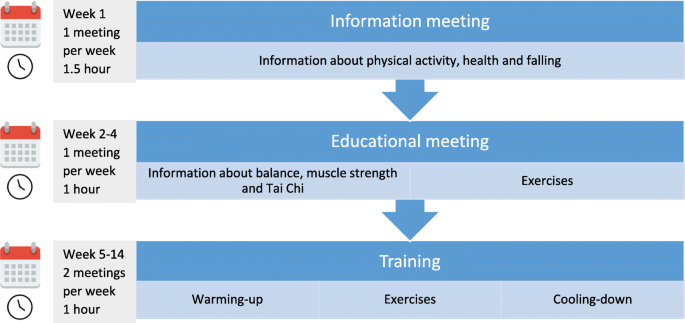The Best Strategy To Use For Dementia Fall Risk
The Best Strategy To Use For Dementia Fall Risk
Blog Article
Getting The Dementia Fall Risk To Work
Table of ContentsGetting My Dementia Fall Risk To WorkDementia Fall Risk for DummiesThe Best Strategy To Use For Dementia Fall RiskThe Basic Principles Of Dementia Fall Risk Little Known Questions About Dementia Fall Risk.
Evaluating fall threat aids the whole healthcare group create a more secure atmosphere for every patient. Make sure that there is an assigned location in your medical charting system where personnel can document/reference ratings and document appropriate notes associated with fall prevention. The Johns Hopkins Fall Danger Assessment Tool is among lots of tools your team can use to aid prevent damaging clinical occasions.Client falls in hospitals prevail and debilitating unfavorable events that persist in spite of years of initiative to reduce them. Improving interaction across the analyzing nurse, treatment group, individual, and person's most involved family and friends might strengthen fall avoidance efforts. A group at Brigham and Female's Health center in Boston, Massachusetts, looked for to develop a standard autumn avoidance program that focused around improved communication and individual and family interaction.

The technology team highlighted that effective application depends upon individual and personnel buy-in, combination of the program into existing workflows, and fidelity to program procedures. The team noted that they are grappling with just how to make sure connection in program application during durations of dilemma. During the COVID-19 pandemic, as an example, an increase in inpatient falls was related to constraints in individual involvement in addition to restrictions on visitation.
The Best Strategy To Use For Dementia Fall Risk
These incidents are generally taken into consideration preventable. To implement the intervention, companies require the following: Accessibility to Autumn suggestions resources Loss ideas training and retraining for nursing and non-nursing personnel, including new nurses Nursing workflows that enable person and family members involvement to perform the drops assessment, guarantee use of the avoidance strategy, and conduct patient-level audits.
The results can be very destructive, typically increasing individual decline and triggering longer hospital keeps. One research study estimated stays raised an added 12 in-patient days after a patient fall. The Fall TIPS Program is based on appealing people and their family/loved ones across 3 primary procedures: assessment, customized preventative treatments, and bookkeeping to ensure that patients are participated in the three-step loss prevention procedure.
The client assessment is based upon the Morse Loss Scale, which is a verified fall danger assessment device for in-patient health center settings. The scale consists of the 6 most typical factors clients in health centers fall: the client loss background, risky conditions (including polypharmacy), usage of IVs and other external devices, psychological condition, stride, and movement.
Each danger factor links with one or more actionable evidence-based treatments. The registered nurse creates a strategy that incorporates the interventions and is visible to the care group, individual, and family on a laminated poster or published aesthetic help. Registered nurses establish the strategy while meeting with the individual and the individual's household.
3 Simple Techniques For Dementia Fall Risk
The poster works as a communication tool with various other members of the client's treatment team. Dementia Fall Risk. The audit component of the program includes analyzing the individual's expertise of their threat variables and prevention plan at the system and hospital degrees. Nurse champions conduct at least 5 private interviews a month with individuals and their family members to look for understanding of the fall avoidance strategy

A projected 30% of these drops lead to injuries, which can range in intensity. Unlike various other negative events that need a standardized clinical feedback, fall prevention see this here depends very on the needs of the person. Consisting of the input of people that know the person finest permits better customization. This strategy has actually proven to be more efficient than fall prevention programs that are based largely on the manufacturing of a danger rating and/or are not customizable.
What Does Dementia Fall Risk Mean?

Based upon auditing outcomes, one website had 86% conformity and 2 websites had over 95% compliance. A cost-benefit evaluation of the Fall pointers program in eight healthcare facilities estimated that the program expense $0.88 per patient to execute and led to financial savings of $8,500 per 1000 patient-days in straight expenses connected to the avoidance of 567 drops over three years and eight months.
According to the innovation team, organizations interested in carrying out the program needs to carry out a preparedness assessment and drops prevention voids analysis. 8 Additionally, organizations must ensure the needed facilities and workflows for implementation and develop an implementation strategy. If one exists, the organization's Fall Avoidance Task Pressure must be entailed in preparation.
The Facts About Dementia Fall Risk Uncovered
To begin, organizations must make certain completion of training modules by Related Site nurses and nursing aides - Dementia Fall Risk. Medical facility staff must assess, based upon the needs of a healthcare facility, whether to use an electronic health and wellness document printout or paper variation of the autumn avoidance plan. Carrying out teams must hire and train nurse champs and establish procedures for auditing and reporting on loss information
Team require to be entailed in the procedure of revamping the process to engage clients and family members in the evaluation and avoidance strategy process. Equipment should remain in place to ensure that systems can comprehend why an autumn occurred and remediate the cause. Extra particularly, nurses ought to have networks to give ongoing feedback to both personnel and system click site leadership so they can readjust and improve autumn prevention operations and communicate systemic problems.
Report this page